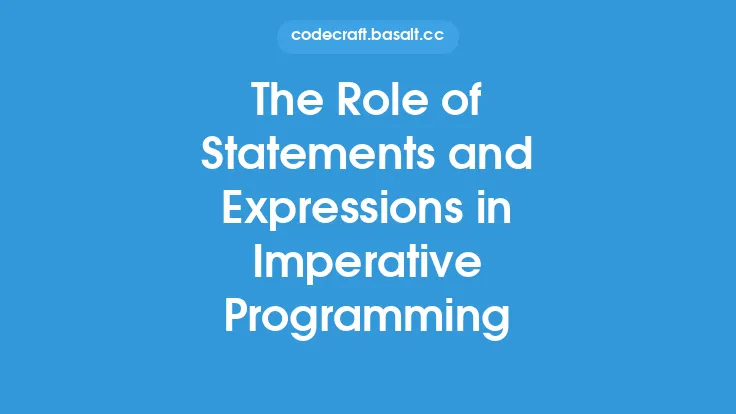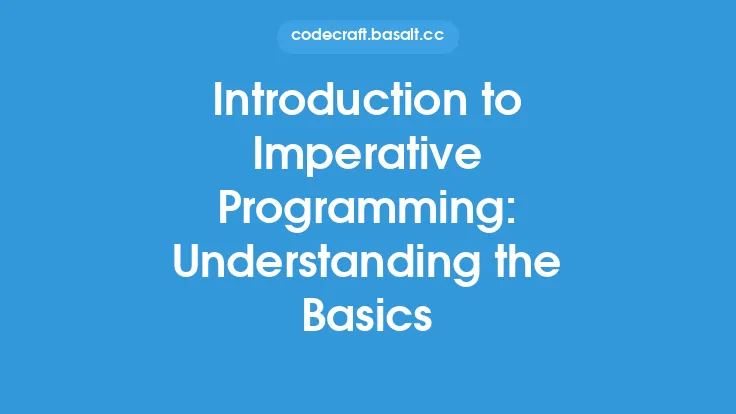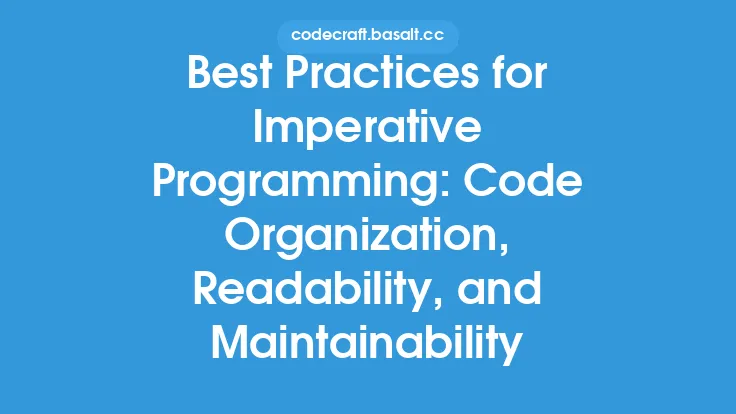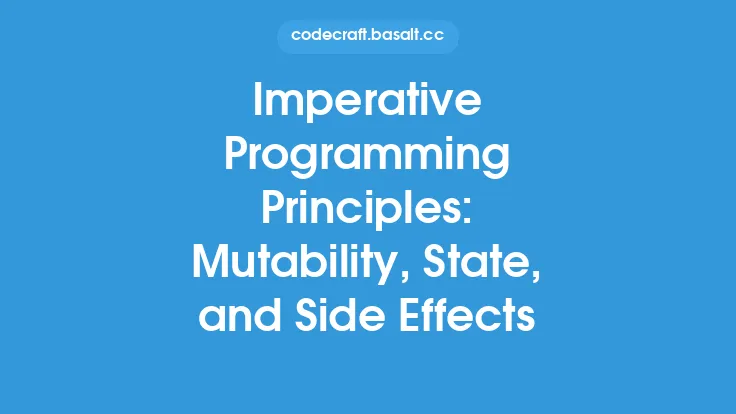Imperative programming is a paradigm that focuses on describing how to perform a task, using statements that change the program's state. At the heart of imperative programming lie control structures, which determine the flow of a program's execution. Control structures are essential for writing efficient, readable, and maintainable code. In this article, we will delve into the world of control structures in imperative programming, exploring loops, conditionals, and functions in detail.
Introduction to Loops
Loops are a fundamental control structure in imperative programming, allowing a program to execute a block of code repeatedly for a specified number of iterations. There are several types of loops, including for loops, while loops, and do-while loops. For loops are used when the number of iterations is known in advance, while loops are used when the number of iterations is unknown, and do-while loops are used when the loop body must be executed at least once. Loops are essential for tasks such as iterating over arrays, performing calculations, and reading input from users.
Conditionals
Conditionals are another crucial control structure in imperative programming, allowing a program to make decisions based on conditions or predicates. The most common type of conditional is the if-else statement, which executes a block of code if a condition is true and another block of code if the condition is false. Switch statements are also used to make decisions based on a value, executing a block of code corresponding to the value. Conditionals are essential for tasks such as validating user input, handling errors, and making decisions based on data.
Functions
Functions are a control structure that allows a program to encapsulate a block of code that can be executed multiple times from different parts of the program. Functions take arguments, perform calculations, and return values. They are essential for tasks such as reusing code, reducing duplication, and improving modularity. Functions can be categorized into two types: pure functions and impure functions. Pure functions have no side effects and always return the same output given the same inputs, while impure functions have side effects and may return different outputs given the same inputs.
Loop Control Statements
Loop control statements are used to control the flow of loops, allowing a program to skip iterations, exit the loop, or repeat iterations. The most common loop control statements are break, continue, and return. The break statement exits the loop immediately, while the continue statement skips the current iteration and moves to the next iteration. The return statement exits the function and returns a value to the caller. Loop control statements are essential for tasks such as handling errors, validating user input, and optimizing performance.
Conditional Statements with Loops
Conditional statements can be used in conjunction with loops to make decisions based on conditions and execute a block of code repeatedly. The most common example is the use of if-else statements inside a loop to filter out certain iterations or perform different actions based on conditions. Conditional statements can also be used to control the flow of loops, allowing a program to exit the loop or skip iterations based on conditions.
Function Composition
Function composition is a technique used to combine multiple functions to create a new function. This technique is essential for tasks such as reusing code, reducing duplication, and improving modularity. Function composition can be achieved using higher-order functions, which take other functions as arguments or return functions as output. Higher-order functions are essential for tasks such as mapping, filtering, and reducing data.
Best Practices for Using Control Structures
When using control structures, it is essential to follow best practices to ensure that the code is readable, maintainable, and efficient. Some best practices include keeping loops and conditionals simple and concise, avoiding nested loops and conditionals, and using functions to encapsulate complex logic. Additionally, it is essential to use meaningful variable names, follow a consistent coding style, and use comments to explain the purpose of the code.
Common Pitfalls and Errors
When using control structures, there are several common pitfalls and errors that can occur. Some common pitfalls include infinite loops, which can cause the program to hang or crash, and off-by-one errors, which can cause the program to produce incorrect results. Additionally, using loops and conditionals incorrectly can lead to performance issues, such as slow execution or high memory usage. It is essential to test the code thoroughly and use debugging techniques to identify and fix errors.
Conclusion
In conclusion, control structures are a fundamental aspect of imperative programming, allowing a program to execute a block of code repeatedly, make decisions based on conditions, and encapsulate complex logic. Loops, conditionals, and functions are essential control structures that can be used to write efficient, readable, and maintainable code. By following best practices, avoiding common pitfalls and errors, and using control structures correctly, developers can write high-quality code that meets the requirements of their applications. Whether you are a beginner or an experienced developer, understanding control structures is crucial for writing effective and efficient code in imperative programming.





